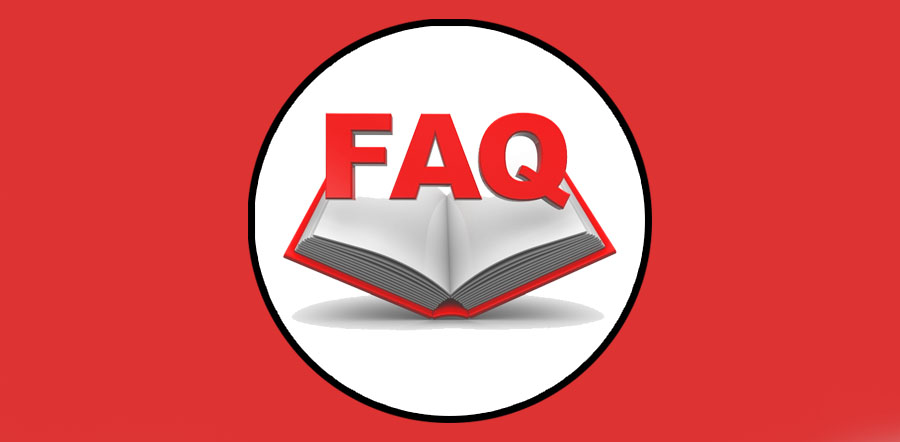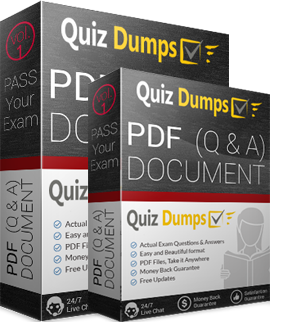ISO-31000-CLA
Guaranteed Success in ISO-31000-CLA Exam
Are you looking for real ISO-31000-CLA exam questions ? You’re in the right place!
Pass your GAQM ISO-31000-CLA exam with the latest QuizDumps PDF Questions & Answers.
QuizDumps offers authentic, updated, and expert-verified ISO-31000-CLA braindumps.
Want top scores? Start your prep now with QuizDumps study material.
1: Download Q&A PDF
Buy & Download 100% real, updated and verified exam questions and answers tested and prepared by GAQM experts to pass ISO-31000-CLA exam.
2: Prepare
Prepare for ISO-31000-CLA with 100% confidence using QuizDumps's ISO-31000-CLA exam dumps PDF or ISO-31000-CLA practice exam.
3: Pass Your Exam
QuizDumps's ISO-31000-CLA exam kit prepares you to confidently ace all ISO-31000-CLA questions and pass on your first attempt with top scores.
Comments
Main points of GAQM ISO-31000-CLA Test
The GAQM ISO 31000 Certified Lead Auditor (CLA) exam focuses on demonstrating a comprehensive understanding of ISO 31000:2018, the international standard for risk management. The main points covered include:
1. Understanding the Principles of ISO 31000: This is foundational. Candidates need to know the core principles of risk management as defined by the standard, including:
- Creating and maintaining context: Understanding the organization's internal and external environment, objectives, and risk appetite.
- Leadership and commitment: The role of top management in establishing and maintaining a risk management framework.
- Integrating risk management: Embedding risk management within all organizational processes and activities.
- Tailoring: Adapting the risk management approach to the organization's specific context and needs.
- Collaboration and communication: Effective communication and collaboration among stakeholders.
- Risk control and monitoring: Establishing, implementing, and monitoring controls to manage risks.
- Review and improvement: Continuously reviewing and improving the risk management process.
2. The Risk Management Process: The exam heavily emphasizes the stages of the risk management process:
- Establishing the context: Defining scope, objectives, criteria, and risk appetite.
- Identifying risks: Using various techniques to identify potential risks (e.g., brainstorming, SWOT analysis).
- Analyzing risks: Assessing the likelihood and impact of identified risks.
- Evaluating risks: Determining the overall significance of risks based on likelihood and impact.
- Treating risks: Developing and implementing strategies to manage risks (e.g., avoidance, mitigation, transfer, acceptance).
- Monitoring and reviewing: Tracking the effectiveness of risk treatments and making adjustments as needed.
3. Risk Management Techniques and Tools: The exam expects candidates to be familiar with a variety of techniques and tools used in risk management, such as:
- Risk assessment matrices: Visual tools for evaluating likelihood and impact.
- Risk registers: Centralized repositories of identified and assessed risks.
- Key Risk Indicators (KRIs): Metrics used to monitor the effectiveness of risk treatments.
- Risk appetite statements: Formal expressions of the organization's tolerance for risk.
- Different risk treatment strategies: Avoidance, mitigation, transfer, acceptance.
4. Auditing Risk Management Systems: A significant portion of the exam focuses on auditing aspects:
- Planning an audit: Defining the scope, objectives, and methodology of the audit.
- Conducting an audit: Gathering evidence, interviewing stakeholders, and reviewing documentation.
- Reporting audit findings: Communicating audit results and recommendations to management.
- Following up on audit findings: Verifying that corrective actions have been implemented.
- Understanding audit standards and procedures: Using appropriate auditing techniques and documenting findings correctly.
5. Legal and Regulatory Compliance: Understanding how risk management relates to legal and regulatory requirements and demonstrates compliance.
In short, the GAQM ISO 31000 CLA exam tests the candidate's ability to understand, apply, and audit a robust risk management system based on the ISO 31000 standard. It's not just about memorizing the standard; it's about demonstrating practical knowledge and the ability to apply it in real-world scenarios.
| Exam Code | Certifications | Questions | Comments | Reviews |
|---|---|---|---|---|
| CSM-001 Dumps | Certified Scrum Master | 119 Questions | 10 | 2 |
| CTL-001 Dumps | Certified Team Leader | 70 Questions | 4 | 1 |
| CITM-001 Dumps | Certified Information Technology Manager | 80 Questions | 3 | 0 |
| ISO-31000-CLA Dumps | ISO Certifications | 100 Questions | 1 | 0 |
| CDCP-001 Dumps | Certified Data Centre Professional | 40 Questions | 1 | 1 |
| CDCS-001 Dumps | Certified Data Centre | 40 Questions | 1 | 0 |
| ISO27-13-001 Dumps | ISO Certifications | 100 Questions | 0 | 0 |
| CCCP-001 Dumps | Certified Cloud Computing Professional | 450 Questions | 0 | 0 |
| PPM-001 Dumps | Professional in Project Management | 223 Questions | 0 | 0 |
| ISO-BCMS-22301 Dumps | ISO Certifications | 100 Questions | 0 | 0 |
| CLSSBB-001 Dumps | Certified Lean Six Sigma Black Belt | 300 Questions | 0 | 0 |
| CASPO-001 Dumps | Certified Agile Scrum Product Owner | 80 Questions | 0 | 0 |
| CLSSGB-001 Dumps | Certified Lean Six Sigma Green Belt | 200 Questions | 0 | 0 |
| CFA-001 Dumps | Certified Forensic Analyst | 180 Questions | 0 | 0 |
| BPM-001 Dumps | Business Management Professional | 50 Questions | 0 | 0 |
Why PDF Format?
Our PDF format offers seamless portability across multiple devices, allowing you to study anytime, anywhere. For a more immersive preparation, our Practice Test software replicates the real exam environment. With various testing modes and advanced self-assessment features, our practice exams stand out as the best in the industry.
Is This User Friendly & Easily Accessible on Mobile Devices?
We are committed to delivering precise ISO 31000 - Certified Lead Risk Manager Exam questions and answers, accompanied by detailed explanations. At QuizDumps, we value your time and investment, ensuring that every question and answer is thoroughly verified by GAQM experts. Our team consists of highly qualified professionals with years of hands-on experience in the field, guaranteeing reliable and up-to-date exam preparation.
Are All Materials Verified by Experts?
QuizDumps is a trusted name in certification exam preparation, offering [Authentic, Updated, and Real] ISO-31000-CLA Dumps, carefully crafted and verified by IT professionals. If you want to achieve top scores, kickstart your preparation today with our comprehensive ISO-31000-CLA dumps PDF.
What is Our Commitment !
At QuizDumps, we are committed to helping professionals pass their certification exams in the shortest time possible. Our goal is to provide top-quality study materials and exceptional customer support. We continuously enhance our GAQM ISO-31000-CLA exam preparation resources by updating question banks, adding new features, and promptly addressing any reported issues.


Seriously considering this for my ISO 31000 CLA exam prep – the practice tests look legit!